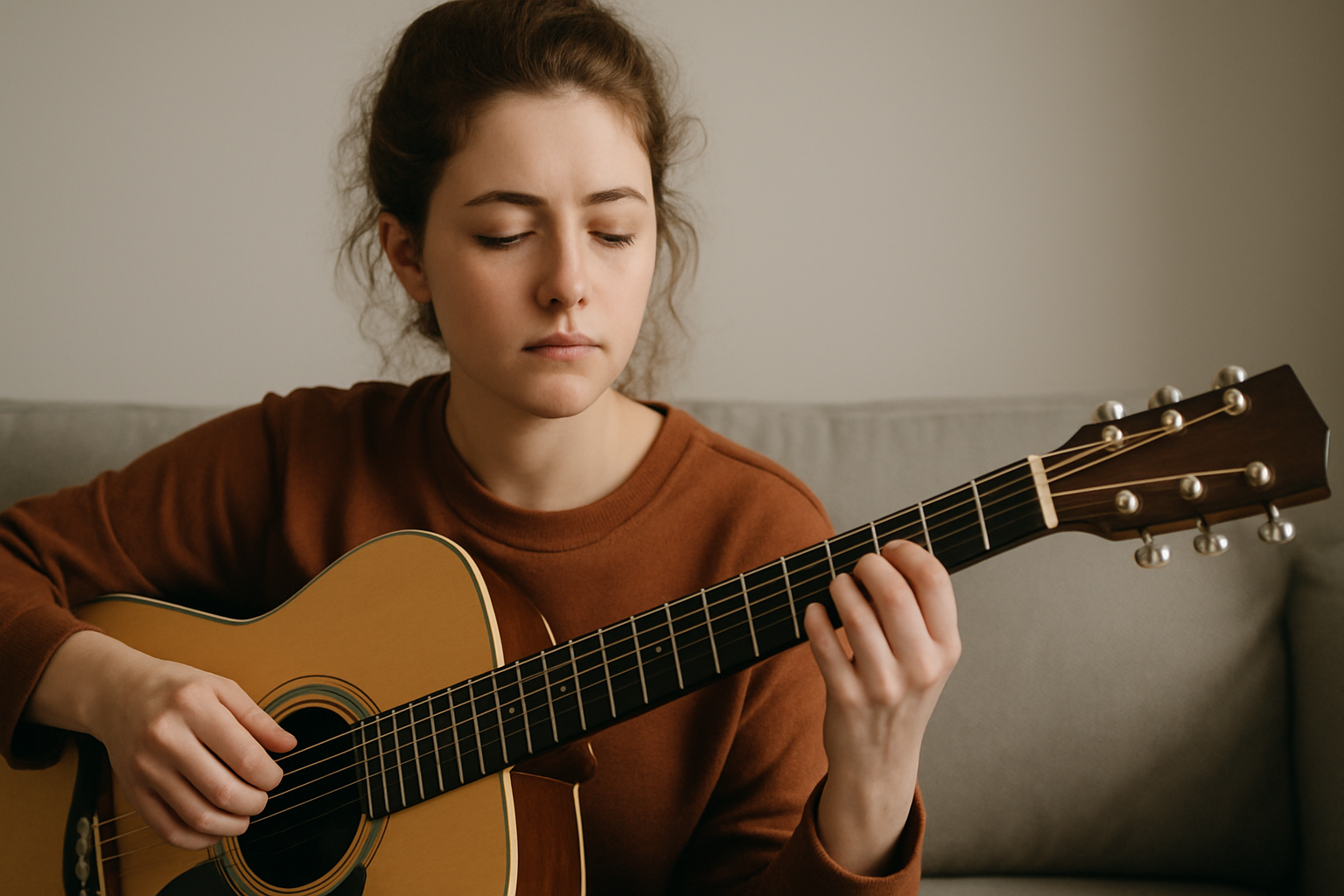Many beginner musicians believe that the only way to improve is by sitting down with their instrument and physically practicing. While hands-on practice is essential, there’s another powerful tool that can accelerate progress, build confidence, and reduce anxiety: visualization.
Visualization is the act of mentally rehearsing music without actually playing it. Athletes use visualization to prepare for competitions, and musicians can apply the same techniques to strengthen memory, refine skills, and enhance performance. In this article, we’ll explore what visualization is, why it works, and how beginners can incorporate it into their music journey.
What Is Visualization in Music?
Visualization in music involves imagining the act of playing, singing, or performing in vivid detail. It is not passive daydreaming—it’s focused mental practice. Examples include:
- Seeing your fingers move across the keys or strings.
- Hearing the sound of each note clearly in your mind.
- Imagining yourself standing confidently on stage.
- Mentally rehearsing how to breathe during a difficult passage.
When done correctly, visualization activates many of the same neural pathways as physical practice, reinforcing muscle memory and mental focus.
Why Visualization Works
1. Engages the Brain Like Real Practice
Studies in neuroscience show that imagining an action triggers brain activity similar to performing it physically. For musicians, this means visualization strengthens connections related to rhythm, pitch, and coordination.
2. Builds Confidence
By mentally rehearsing success, musicians train their minds to expect positive outcomes. This reduces stage fright and boosts self-assurance.
3. Improves Memory
Visualizing a piece helps encode it more deeply in long-term memory, making recall easier during practice and performance.
4. Provides Practice Anywhere
You can visualize without an instrument—on the bus, before bed, or during breaks. This makes it a powerful tool when time or space is limited.
5. Enhances Focus
Visualization requires concentration. Regular practice strengthens mental discipline, which carries over into real playing.
Common Misconceptions About Visualization
- “It’s only for advanced musicians.”
False. Beginners can benefit greatly by visualizing simple scales, songs, or chord changes. - “It replaces physical practice.”
No. Visualization complements practice—it doesn’t substitute for it. - “I’m not good at imagining things.”
Visualization can be developed like any skill. With practice, mental images and sounds become clearer.
How to Practice Visualization
Step 1: Relax and Focus
Sit or lie comfortably. Take deep breaths to calm your body and focus your mind.
Step 2: Choose a Specific Goal
Pick one thing to visualize, such as playing a scale, singing a phrase, or performing a section of a piece.
Step 3: Engage All Senses
- See your fingers, sheet music, or audience.
- Hear each note clearly.
- Feel the keys, strings, or breath control.
- Even imagine smells or sensations associated with performing.
The more detailed the imagery, the more effective it becomes.
Step 4: Visualize Slowly
Begin at a comfortable tempo. Just like physical practice, mental rehearsal should be slow and accurate before building speed.
Step 5: Repeat Consistently
Spend 5–10 minutes daily visualizing. Over time, it becomes second nature.
Practical Visualization Exercises
1. Scale Visualization
Close your eyes and imagine playing a C major scale. Hear each note, see your fingers moving, and picture your hand positions.
2. Performance Walkthrough
Visualize walking onto stage, sitting at your instrument, and performing confidently. Imagine applause afterward.
3. Problem-Solving
Pick a tricky measure and visualize playing it perfectly, focusing on finger placement and rhythm.
4. Breathing Practice
For singers and wind players, visualize inhaling and exhaling smoothly during phrases.
5. Silent Rehearsal
Read through sheet music and imagine the sound without playing a note. This strengthens inner hearing.
Tips for Effective Visualization
- Be consistent: Like physical practice, visualization works best when done daily.
- Stay patient: Clear imagery develops with time.
- Combine with physical practice: Visualize first, then play. Notice how the two reinforce each other.
- Stay positive: Always imagine success, not failure.
How Visualization Helps With Stage Anxiety
Stage fright often comes from uncertainty. Visualization prepares the mind by rehearsing every detail of the performance. By the time you step on stage, your brain feels like it has already succeeded.
Techniques include:
- Imagining a calm walk to the stage.
- Visualizing the audience as supportive.
- Rehearsing how to handle mistakes calmly.
Real-Life Examples of Visualization in Music
- Classical pianists often visualize entire pieces away from the piano, reinforcing memory.
- Jazz musicians mentally rehearse chord progressions before improvising.
- Opera singers visualize stage movements and breath control before performances.
These practices prove that visualization is not abstract—it’s a concrete tool used by professionals worldwide.
Long-Term Benefits of Visualization
- Stronger memory and recall.
- Greater confidence under pressure.
- Faster progress when combined with physical practice.
- Deeper connection between mind and body.
- Ability to practice anywhere, anytime.
Final Thoughts: Seeing Success Before It Happens
Visualization is more than just imagination—it’s a form of practice that strengthens both mind and body. For beginners, it offers a powerful way to complement physical playing, build confidence, and accelerate learning.
The next time you feel nervous before practice or performance, close your eyes and imagine success. Visualize your fingers moving smoothly, your voice resonating beautifully, or the audience applauding warmly. Over time, these mental rehearsals will translate into real-life improvements, making you not only a better musician but also a more confident performer.
